05 Jan 2023 , Adventure Mountain Treks , Highest Mountains
There are 14 highest peak in the world which are above 8000m called eight-thousanders. The Eight-Thousanders are the peak that is above 8000m height above the sea level. The Himalayas are nearly all found in south and central Asia, as a result of a collision between the Indian and Eurasia plates. The two continents share a similar rock density, and so the pressure could only be relieved by forcing the plates upwards, thus creating the highest mountains in the world. here we describe to you the 14 8oooers with their height location first ascent .
The death zone which starts from 8000m is a climber hell, the body gasp for oxygen the cell starts dying climber often experiences hallucination and impaired judgment leading to death. In the death zone the climber can develop swelling in the brain a condition called High Altitude Cerebral Edema or fluid in the lungs called High Altitude Pulmonary Edema both are fatal.
List Of the 14 Highest Mountains Of The World
- Everest (8848m / 29028ft)
- K2 (8611m / 28250ft)
- Kanchenjunga (8586m / 28169ft)
- Lhotse (8516m / 27940ft)
- Makalu (8463m / 27766ft)
- Cho Oyu (8201m / 26906ft)
- Dhaulagiri (8167m / 26795ft)
- Manaslu (8163m / 26781ft)
- Nanga Parbat (8125m / 26660ft)
- Annapurna I (8091m / 26545ft)
- Gasherbrum I (8068m / 26469ft)
- Broad Peak (8047m / 26400ft)
- Gasherbrum II (8035m / 26362ft)
- Shishapangma (8012m / 26285ft)
Mount Everest
Height:8848.48m
Location: Nepal/China
First Ascent: Edmund Hillary/Tenzing Norgay Sherpa

Mt. Everest
Everest is also called Sagarmatha in Nepali, and the sherpas do call it Chomolungma i.e (the goddess mother of the earth). Everest was first climbed by Edmund Hillary and Tenzing Norgay Sherpa on 29 May 1953. Each year hundreds of climbers attempt to climb Everest, whats makes Everest so popular is the euphoric feeling of being at the highest point on earth.
Everest also has a fair share of casualties with more and more people trying to reach the summit and they put all their energy into climbing the summit forgetting that reaching the summit is only halfway goal returning back safely is the main goal.
Click here For Mt. Everest Expedition
Mount K2
Height:8611m
Location: Pakistan/China
First Ascent: A. Compagnoni, L. Lacedelli(31 July,1914)
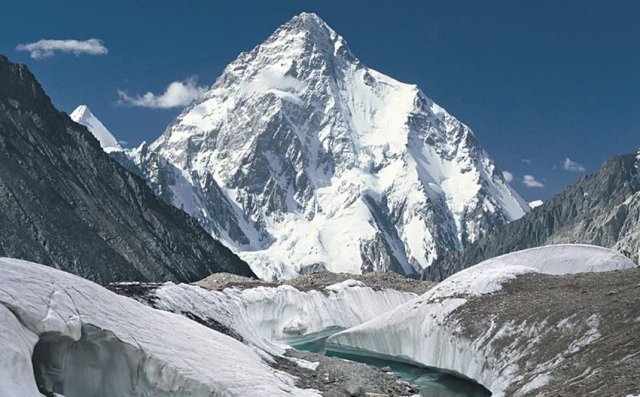
Mount K2
Mount K2 is the second highest peak in the world which lies in the Karakoram range, it is the second peak of the Karakoram range. Italian climbers A.Compagnoni and L.Lacadelli were the first to ascend to peak on 31 July 1914. Although K2 shares the border with Pakistan and China, the climbing of the peak usually happens through the Pakistan side.
Mount K2 is also named the savage mountain as it has the second-highest death rate among the 14 peaks. One of every four people loses their life while ascending the mountain. K2 before hasn’t been climbed in the winter season but it has changed recently as Nepali climbers Nirmal Purja along with his team have successfully climbed the K2 in winter and made a record.
Kanchenjunga
Height: 8586m
Location: Nepal/India
First Ascent: Joe Brown, George Band(25 May 1955)
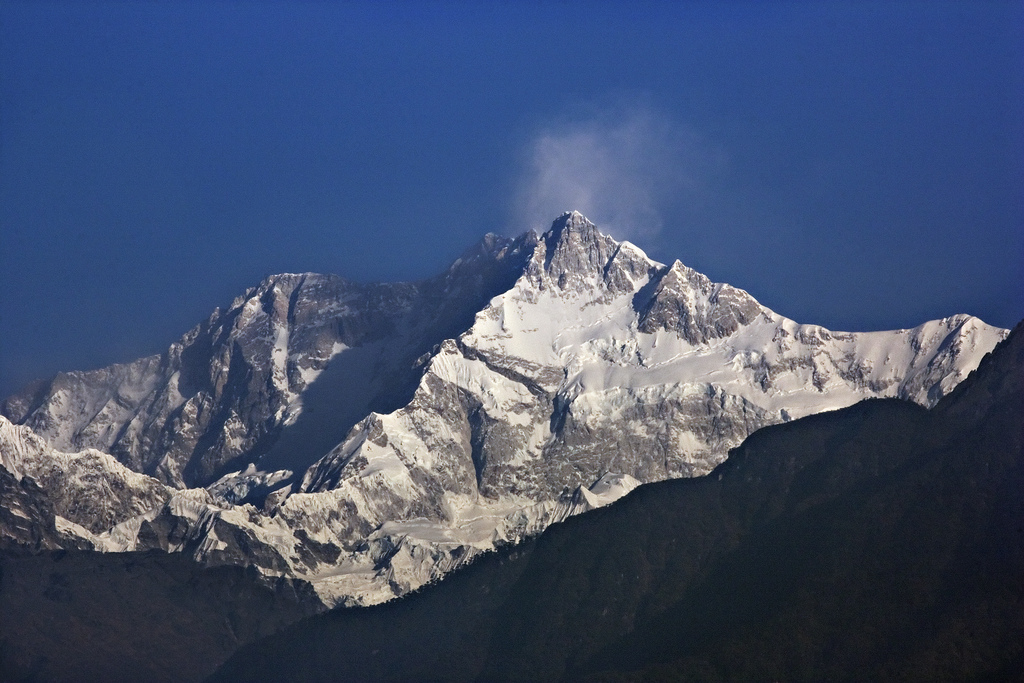
Kangchenjunga
Kanchenjunga is the third highest peak in the world, the name Kanchenjunga translates to “Five treasures of snow”. It lies on Nepal/India border and has four routes to the summit, the three routes northwest to northeast and southeast lie in Nepal while the last route is from Sikkim, from the year 2000 the Indian government has closed the route so all the three routes to the summit are from Nepal side.
Till 1852, Kanchenjunga was assumed to be the highest peak in the world but with more research and findings in the year 1856, it was concluded it was the third highest peak in the world.
Lhoste
Height: 8516m
Location: Nepal/China
First Ascent: Fritz Luchsinger & Ernst Reiss, 18 May 1956
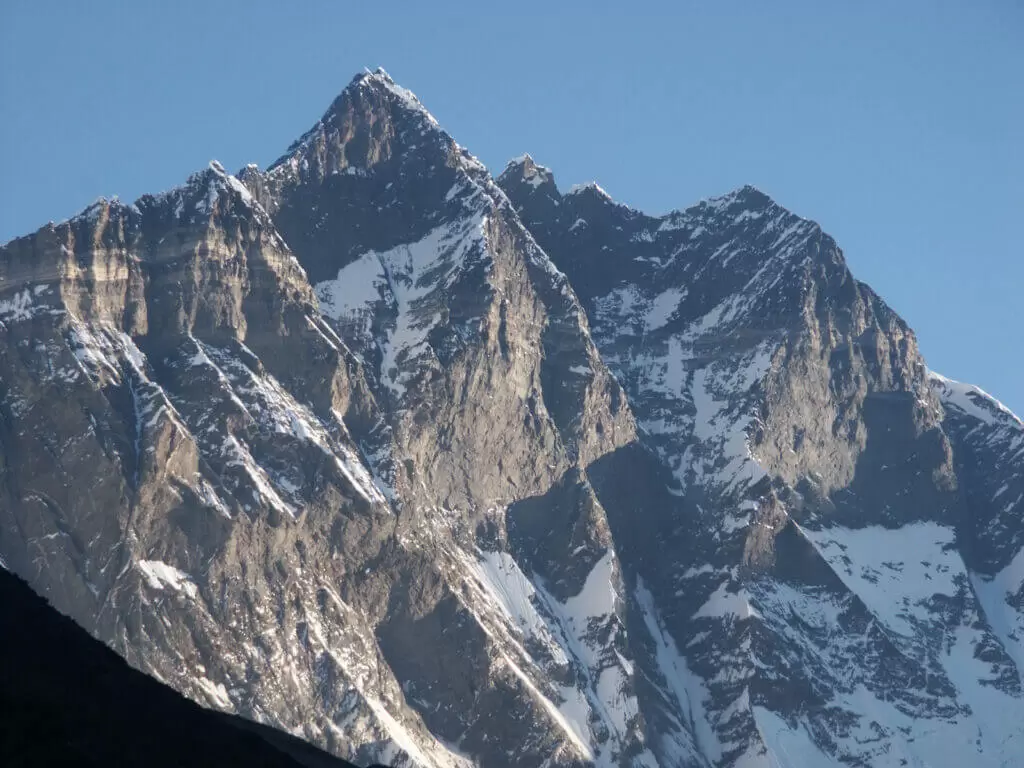
Mt. Lhotse
Lhoste is the fourth highest peak in the world with an elevation of 8516m. Lhoste is best known for its proximity to Everest, climbers ascending the Everest passes through the western flank of Lhoste, called the Lhoste face which consists of an 1125m wall of glacial blue ice. rising at 40 and 50-degree pitches making it a stiff climb that is a challenge even for the experienced mountain climbers. Although the challenges Lhoste is believed to be achievable feet in the climbing industry.
Lhoste was first climbed by Fritz Luchsinger & Emst Resis on 18 May 1956, many people have successfully climbed the Lhoste peak, and often people who chose the Everest Peak have also the option of climbing the Lhoste peak since they share the same route up to the yellow band beyond Camp 3.
Makalu
Height: 8485m
Location: Nepal/China
First Ascent: Jean Couzy & Lionel Terray(15 May 1955)

Mt. Makalu
Makalu is the fifth highest peak in the world with an elevation of 8485m, unlike the other Himalayan peak, Makalu stands alone with its four-sided pyramid-shaped mountain which lies in the southeast of Everest along the border of Nepal and China.
The shape structures of Makalu make it the most technical mountain and it’s quite the hardest mountain to climb. The pyramid-shaped makes the knife-edged ridges and steep pitches make it quite hard for the climber, the climber requires very high technical mountain climbing skills to navigate to the top of Makalu.
Cho Oyo
Height: 8150m
Location: Nepal/China
First Ascent: Joseph Joechler, Pasang Dawa Lama & Herbert Tichy(19 October 1954)
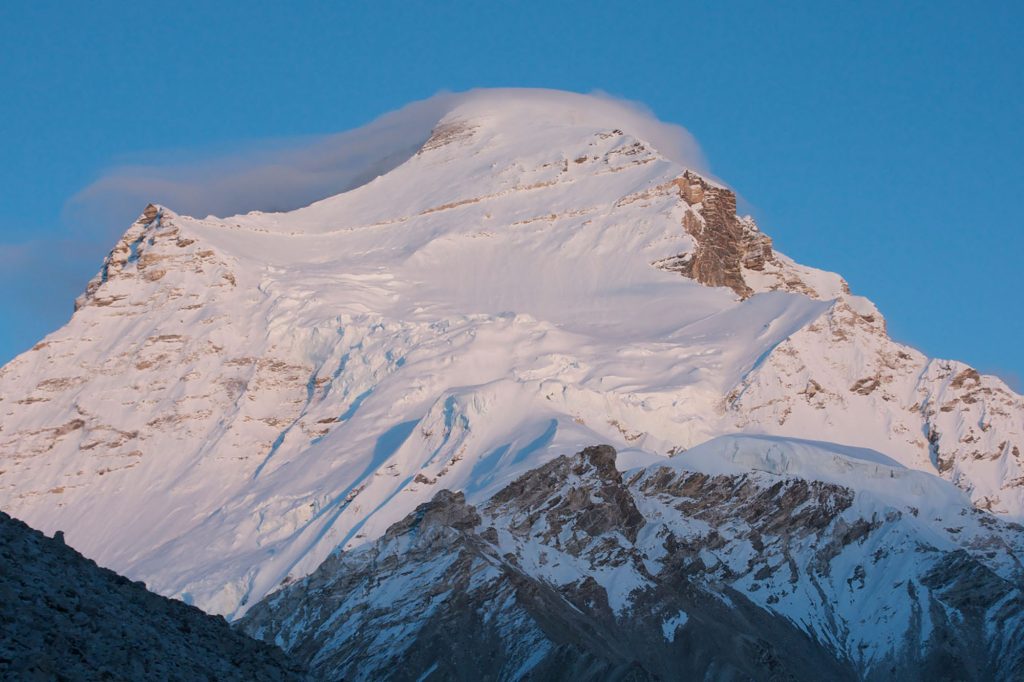
Mount Cho Oyu
Cho Oyo is the sixth highest peak in the world with an elevation of 8150m which lies 20km west of Mount Everest. Cho Oyo is also referred to as a “Turquoise Goddess” in Tibetan Languages. Just below the Cho Oyo there lies Nangpa La a glacial pass that is also a major trade route between the people of the Khumbu region and the Tibetans people.
Among the 14 8000ers Cho Oyo is considered to be the easiest to summit and many climbers summit Cho Oyo to gain the 8000er’s experience and prepare themself for the other more difficult and technical summits.
Various expedition groups and agencies have studied the possibilities of snowboarding and ski mountaineering considering the good snow condition and less objective risk.
Dhaulagiri I
Height: 8167m
Location: Nepal
First Ascent : Kurt Diemberger, Peter Diener, Nawang Dorje, Nima Dorje, Ernst Forrer & Albin Schelbert, 13 May 1960
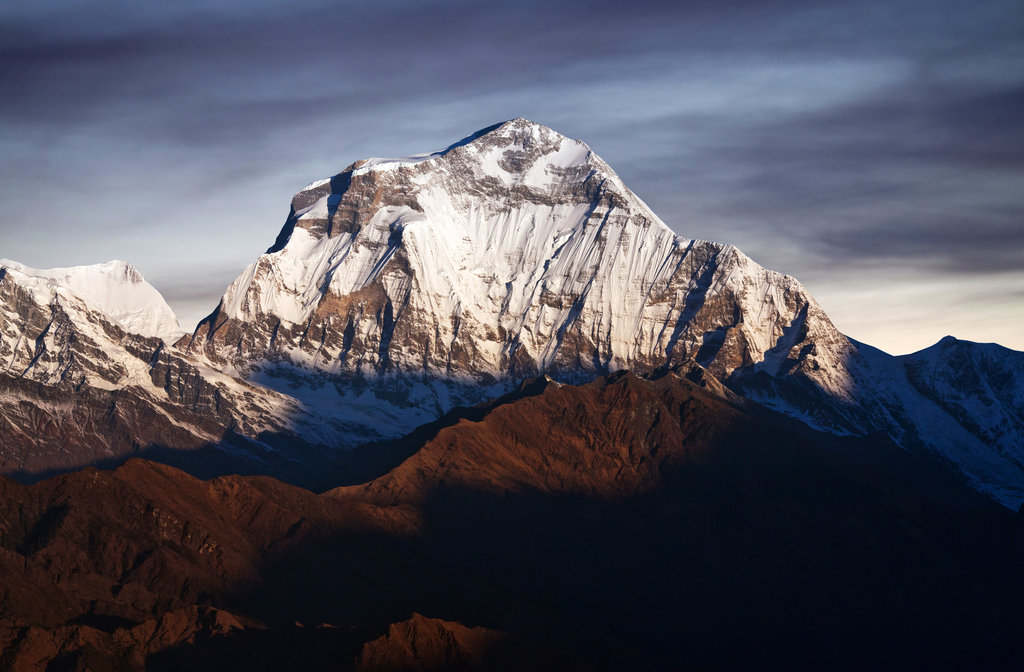
Dhaulagiri I
Dhaulagiri I is the seventh highest peak in the world with an elevation of 8167m. Due to the remoteness of the region Dhaulagiri I unlike its other counterpart receive fewer climbers. A team of Swedish expedition group Kurt Diemberger, Peter Diener, Nawang Dorge, Nima Dorge, Ernst Forrer & Albin Schelbert first ascended the submit at 13 May 1960.
Though Dhaulagiri I is less technical many climbers have lost their lives on its flanks from falls and avalanches, especially during the descent. What makes Dhaulagiri I special is on a clear day it is visible as far south as Gorkhapur in Uttar Pradesh.
Manaslu
Height: 8163m
Location: Nepal
First Ascent: Toshio Imanishi & Gyalzen Norbu, 9 May 1956

Mt. Manaslu
Manaslu is the eighth highest peak in the world with an elevation of 8163m. It means “Mountain of the spirit”. Manaslu was first climbed by a group of Japanese expedition (Toshio Imanishi & Gyalzen Norbu on 9 May 1965.
Manaslu is located on one of the most scenic routes of Nepal where the raw untouched wonders of mother nature left the climbers mesmerized. It is also considered as a preparation peak for Everest Expedition as the peak is accessible and the mountain’s technical aspects provide the much-needed groundwork for climbing Everest.
Click here for Mt. Manaslu Expedition
Nanga Parbat
Height:8126m
Location: Pakistan
First Ascent: Hermann Buhl, 3 July 1953

Mt. Nanga Parbat
Nanga Parbat as the name Nanga symbolizes Naked Parbat is the ninth highest peak in the world with an elevation of 8126m. Nanga Parbat is the western anchor of the Himalayas which is separated from the Karakorum mountain range by the Indus River.
The Rupal Face rising 4600m from its base is often referred to as the highest mountain face in the world. Nanga Parbat is also called a “Killer Mountain” as there is a high number of fatalities, the topographic structure which is composed of enormous amounts of ice and rock, and frequent avalanches and poor weather conditions add a perfect recipe for disaster.
Annapurna I
Height: 8019m
Location: Nepal
First Ascent: Maurice Herzog and Louis Lachenal(3 June 1950)

South_Face_of_Annapurna_I
Annapurna I is the tenth highest peak in the world with an elevation of 8019m. Annapurna is a massif with numerous peaks over 7000m and one peak over 8000m, Annapurna I is the most dangerous mountain as there are lots of technical difficulties, especially the south face which is an extreme step wall of rock rising up to 3000m.
Numerous Climbers have lost their lives while attempting to climb the Annapurna I as there are lots of step walls and ridges with very high chances of avalanches.
Annapurna takes the life of every one of three climbers who attempt the summit thus the name tag of the most dangerous mountain in the world.
Click here for Mt. Annapurna Expedition
Gasherbrum I
Height: 8080m
Location: Pakistan/China
First Ascent: Andrew Kaufmann & Pete Schoening, 5 July 1958
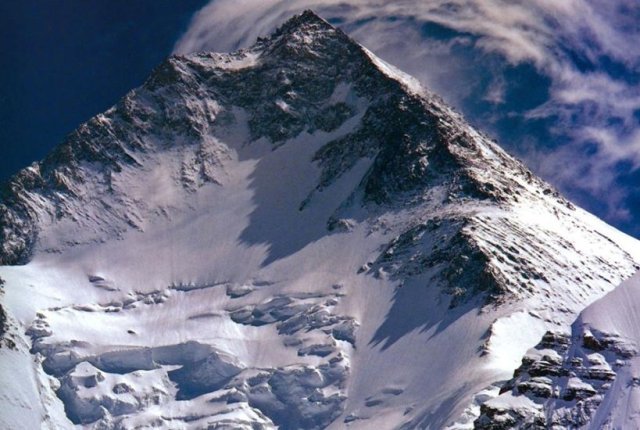
Gasherbrum I
Gasherbrum I is the eleventh highest peak in the world with an elevation of 8080m, It is a part of the Gasherbrum massif which lies in the Karakoram region of the Himalayas. Due to the remoteness of the area and lots of technical difficulties very few people have climbed the summit.
Broad Peak
Height:8015m
Location: Pakistan/China
First Ascent: Fritz Wintersteller, Marcus Schmuck, Kurt Diemberger & Hermann Buhl, 9 June 1957
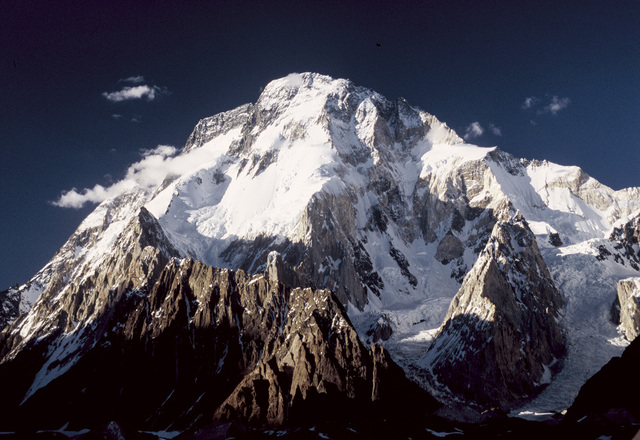
Broad Peak
Broad Peak is the twelve highest peak in the world with an elevation of 8015m, It is also a part of the Gasherbrum massif which lies in the Karakorum region of the Himalayas.
The name Broad peak comes from its 1.5km long summit among the 8000ers it is relatively easy with less technical difficulty which makes it favorable for climbers who want to have some 8000ers experience before trying the other challenging summit like Everest and K2.
Gasherbrum II
Height:8034m
Location: Pakistan/China
First Ascent: Fritz Moravec, Josef Larch & Hans Willenpart, 8 July 1956

Gasherbrum II
Gasherbrum II is the thirteen highest peak in the world with an elevation of 8034m, it is also a part of the Gasherbrum massif which lies in the Karakorum region of the Himalayas. The mountain also falls on the achievable feet of 8000ers.
Shishapangma
Height: 8027m
Location: China
First Ascent: su Ching, Chang Chun-yen, Wang Fuzhou, Chen San, Cheng Tien-liand, Wu Tsung-Yue, Sodnam Doji, Migmar Trashi, Doji & Yonten, 2 May 1964
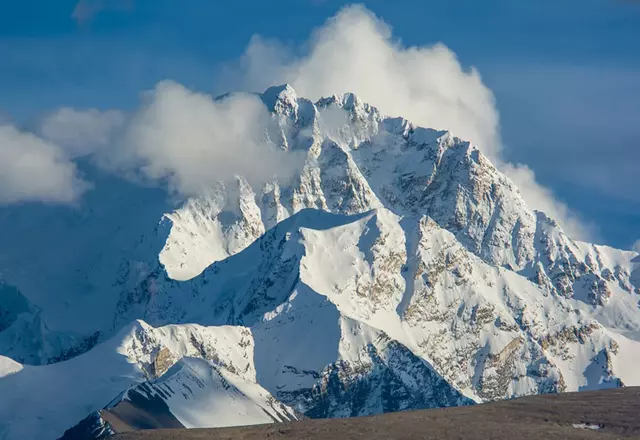
Shishapangma
Shishapangma is the fourteen highest peak in the world with an elevation of 8027m. It lies entirely in Tibet and requires very strict permission from the Chinese authority to climb. Due to the difficulty in permitting, very few climbers have it as their first choice.
These are the 14 highest peaks in the world, with its elevation and people who first ascend the climb. which peak amazed you and which peak are you looking forward to climbing in the near future?






















Leave a Reply